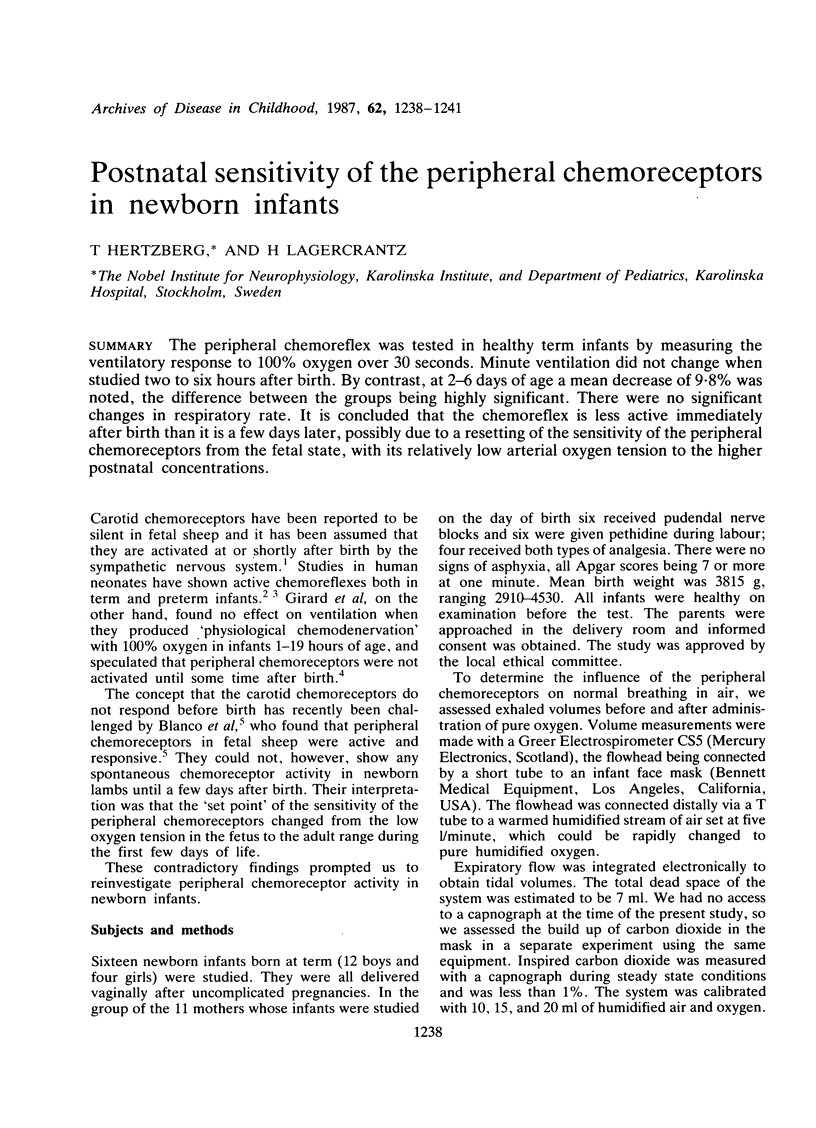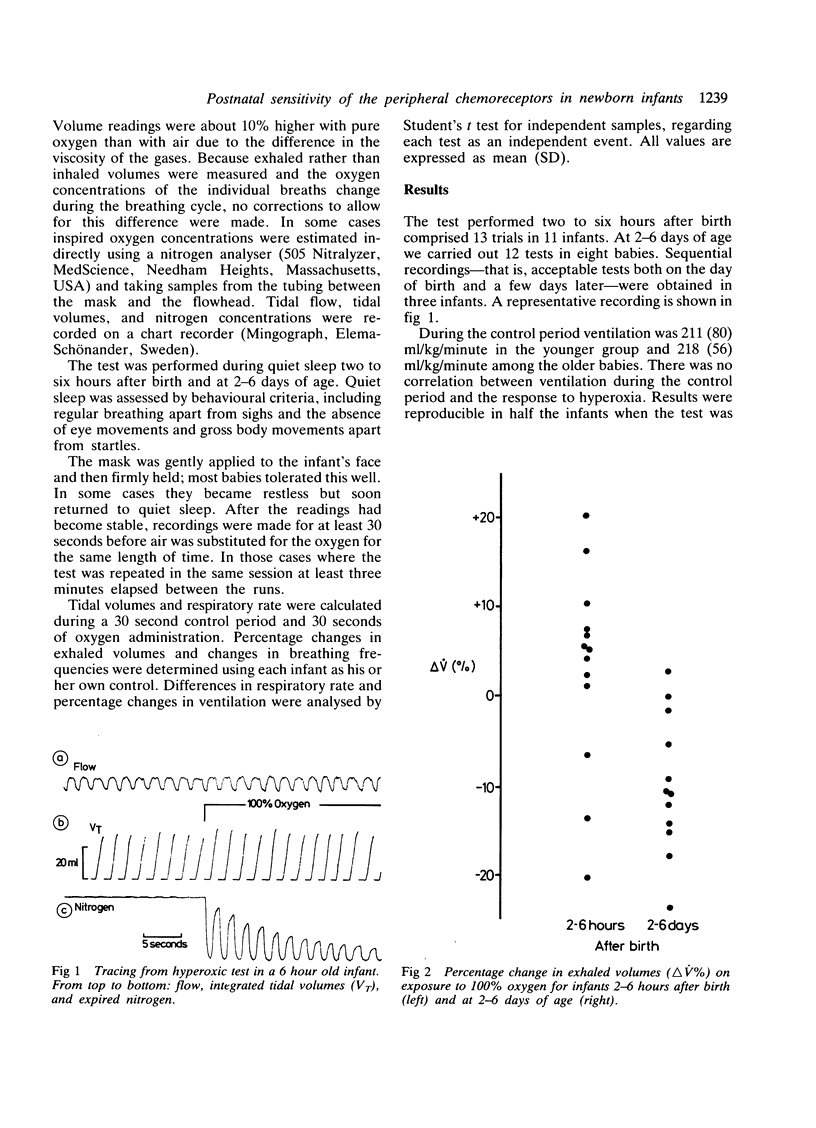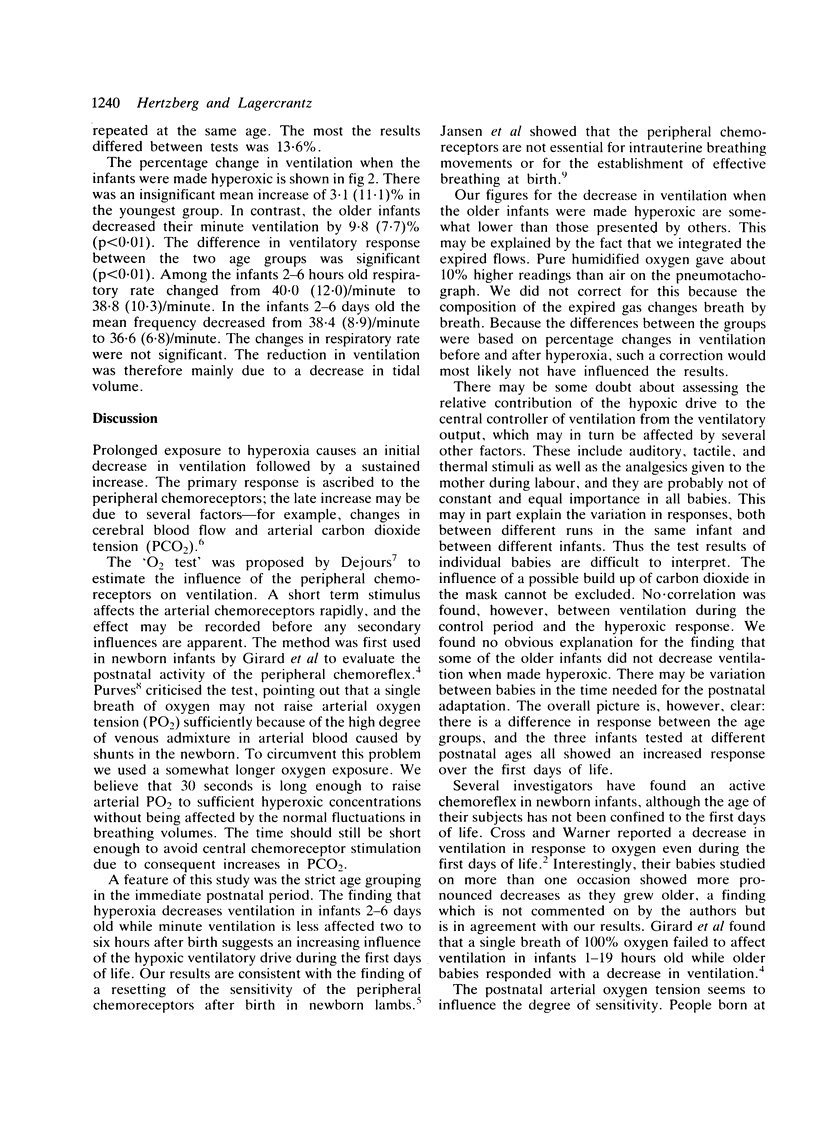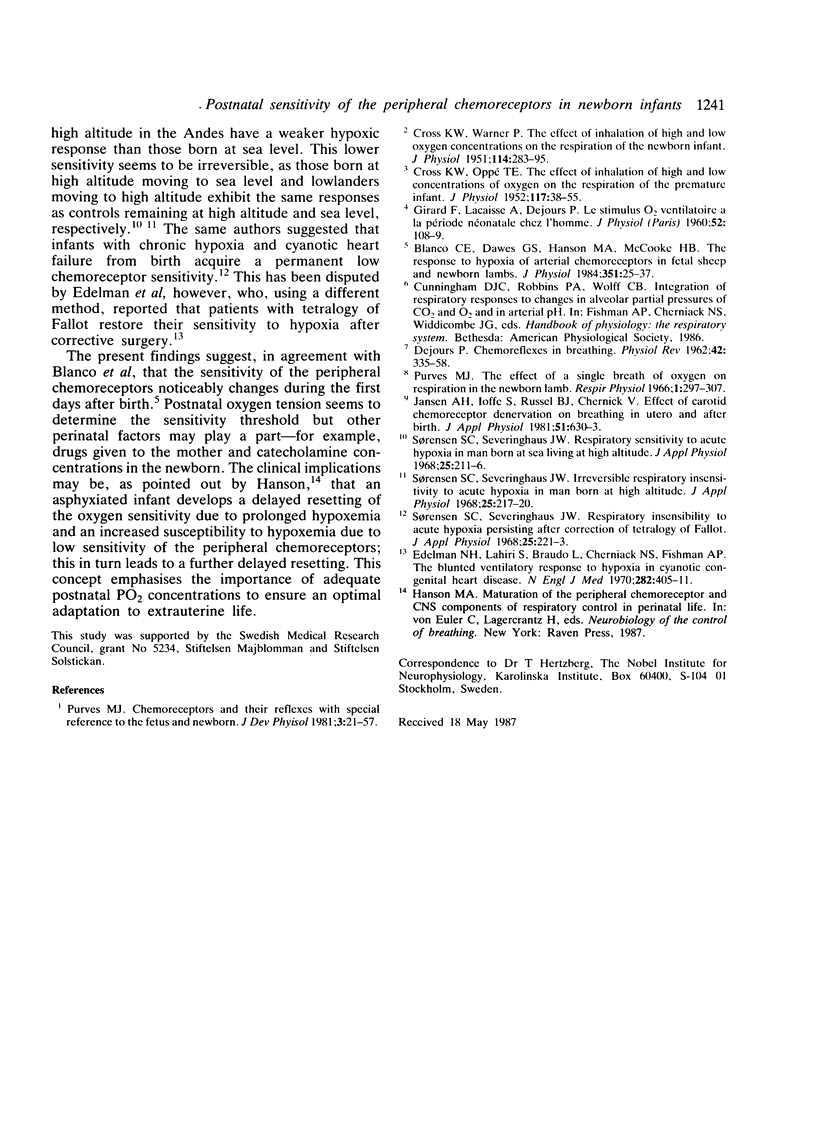Abstract
The peripheral chemoreflex was tested in healthy term infants by measuring the ventilatory response to 100% oxygen over 30 seconds. Minute ventilation did not change when studied two to six hours after birth. By contrast, at 2-6 days of age a mean decrease of 9.8% was noted, the difference between the groups being highly significant. There were no significant changes in respiratory rate. It is concluded that the chemoreflex is less active immediately after birth than it is a few days later, possibly due to a resetting of the sensitivity of the peripheral chemoreceptors from the fetal state, with its relatively low arterial oxygen tension to the higher postnatal concentrations.
Full text
PDF



Selected References
These references are in PubMed. This may not be the complete list of references from this article.
- Blanco C. E., Dawes G. S., Hanson M. A., McCooke H. B. The response to hypoxia of arterial chemoreceptors in fetal sheep and new-born lambs. J Physiol. 1984 Jun;351:25–37. doi: 10.1113/jphysiol.1984.sp015229. [DOI] [PMC free article] [PubMed] [Google Scholar]
- CROSS K. W., OPPE T. E. The effect of inhalation of high and low concentrations of oxygen on the respiration of the premature infant. J Physiol. 1952 May;117(1):38–55. [PMC free article] [PubMed] [Google Scholar]
- CROSS K. W., WARNER P. The effect of inhalation of high and low oxygen concentrations on the respiration of the newborn infant. J Physiol. 1951 Jul;114(3):283–295. doi: 10.1113/jphysiol.1951.sp004620. [DOI] [PMC free article] [PubMed] [Google Scholar]
- DEJOURS P. Chemoreflexes in breathing. Physiol Rev. 1962 Jul;42:335–358. doi: 10.1152/physrev.1962.42.3.335. [DOI] [PubMed] [Google Scholar]
- Edelman N. H., Lahiri S., Braudo L., Cherniack N. S., Fishman A. P. The blunted ventilatory response to hypoxia in cyanotic congenital heart disease. N Engl J Med. 1970 Feb 19;282(8):405–411. doi: 10.1056/NEJM197002192820801. [DOI] [PubMed] [Google Scholar]
- GIRARD F., LACAISSE A., DEJOURS P. [Ventilatory O2 stimulus in the neonatal period in man]. J Physiol (Paris) 1960 Jan-Feb;52:108–109. [PubMed] [Google Scholar]
- Levison H., Cherniack R. M. Ventilatory cost of exercise in chronic obstructive pulmonary disease. J Appl Physiol. 1968 Jul;25(1):21–27. doi: 10.1152/jappl.1968.25.1.21. [DOI] [PubMed] [Google Scholar]
- Purves M. J. Chemoreceptors and their reflexes with special reference to the fetus and newborn. J Dev Physiol. 1981 Feb;3(1):21–57. [PubMed] [Google Scholar]
- Purves M. J. The effect of a single breath of oxygen on respiration in the newborn lamb. Respir Physiol. 1966;1(3):297–307. doi: 10.1016/0034-5687(66)90048-x. [DOI] [PubMed] [Google Scholar]
- Sorensen S. C., Severinghaus J. W. Irreversible respiratory insensitivity to acute hypoxia in man born at high altitude. J Appl Physiol. 1968 Sep;25(3):217–220. doi: 10.1152/jappl.1968.25.3.217. [DOI] [PubMed] [Google Scholar]
- Sorensen S. C., Severinghaus J. W. Respiratory insensitivity to acute hypoxia persisting after correction of tetralogy of Fallot. J Appl Physiol. 1968 Sep;25(3):221–223. doi: 10.1152/jappl.1968.25.3.221. [DOI] [PubMed] [Google Scholar]


